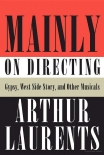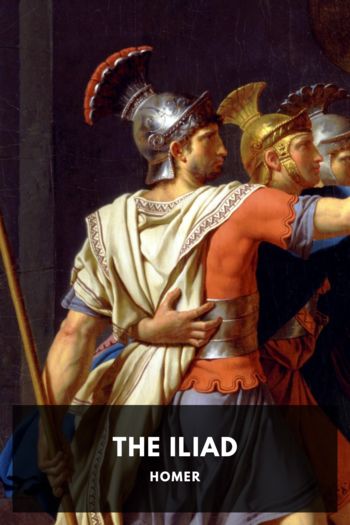Mainly on Directing, Arthur Laurents [best books for students to read TXT] 📗

- Author: Arthur Laurents
Book online «Mainly on Directing, Arthur Laurents [best books for students to read TXT] 📗». Author Arthur Laurents
“Gimmick,” once examined as it should have been, revealed a positive possibility. Rather than making it more difficult for each of the would-be strippers, it could even help them fit in the play if the number itself could fit into the play. But how? How could an unabashed, unapologetic comic turn be converted into a song in a musical play?
Again, ask the basic question: if the strippers weren't singing “You Gotta Get a Gimmick” to stop the show, why were they singing it? The answer had always been there if anyone looked beyond the lyric to where the song comes in the play. Tessie has just introduced Louise to Mazeppa and Electra; they are explaining what it takes to be a stripper—well, there it is, without distortion or finagling, a smooth transition to the three battered friends teaching Louise their business of stripping. The difference made simply by having the number sung not out front to the audience but directly to Louise was gratifyingly out of proportion to how much it did for the story, for the three strippers, and eventually for the second act.
For the story, it restored the focus to Louise simply by her listening and reacting to advice illustrated by a bugle blown out between the legs, strategically placed lights, and balletically ferocious bumps. “Simply” is a huge word unless the listener is Laura Benanti, who can listen and react with seeming spontaneity every night as only the finest actresses can.
For the strippers, it gave each of them a relationship with Louise and another with the other two that became the foundation of a character. In the original production of Gypsy, the three strippers were youngish, attractive, and sexy; their function was to entertain and be funny. Fifty years later, being funny was still a function, but they were blowsy and over the hill, as they would have been in that end-of-the-line burlesque house. Electra was the easiest to give dimension to, not because her role is the smallest but because the Electra I envisioned was a ladylike alcoholic: completely ossified, dead drunk out of her head, able to put one foot in front of the other only with great difficulty. It's not easy, however, to perform a number that calls for belting and heavy bumping and grinding by barely moving and hardly projecting because you ostensibly are too drunk. Marilyn Caskey's problem was to do less and then less than that, but she brought it off hilariously.
Tessie Tura has presumably surefire laughs and overtly pretentious remarks that had been difficult for Alison Fraser to use to create a character she believed in. Now it all came together: Tessie became a remnant in a sagging world. Tough and fragile, she was moving and funny because she wasn't working to be either. She was just Tessie Tura, the unfortunate Texas Twirler.
Mazeppa really worked only in the first production because her bugle routine as a gladiator was originally done in a nightclub act by Faith Dane, which she more or less reproduced in the first Gypsy. Since the routine was essentially hers, Faith was comfortable as the helmeted Rambo Woman she played. Her successors were uncomfortable, unintentionally coming out as cartoon lesbians; but they brought the house down with the bugle bit, so what the hell?
Nancy Opel, who was a terrific Miss Cratchitt in act one, learned to play a good bugle but was uncomfortable and not very good as Mazeppa until we reworked “Gimmick.” When Lenora Nemetz replaced her in the Broadway company, because Nancy unfortunately was committed elsewhere, I made life easier for her by replacing Mazeppa and her Gladiator Ballet with Mazeppa and her Revolution Ballet. This season it was the American Revolution: Mazeppa wore a Paul Revere tricorn and red, white, and blue in strategic places. Lenora was also a terrific Cratchitt, from the moment she walked her Cratchitt walk across the stage.
Nancy didn't have the advantage of playing a patriotic stripper; but no longer hampered by gladiator choreography, her Mazeppa became sarcastic, not strident; friendly, not fierce; and inventively funny with her technical explanation of the limitations of having “no talent.” The Rambo-like military stomping was excised from her solo.
This and other changes I made in the choreography did not make life easy for Bonnie Walker. No one can reproduce the Jerome Robbins choreography for Gypsy as meticulously as Bonnie. She has always done it, and she and I have always worked like Burns and Allen. But choreography is more than steps, and I had been making other, small changes. Kids fell down or fought with each other in the vaudeville acts to show that Rose snapped up whatever bodies she could get; in the barnyard number, June— Leigh Ann Larkin, as tough a customer as Rose yet coruscatingly funny—was sarcastically and humorously aware of the cliché “Moo Cow” song to show she knew how bad the act was; Louise had a larger would-be dancing role in “All I Need Is the Girl” to keep the focus more on her. Bonnie, rehearsing these numbers, was unsure whether the actors were fighting her or obeying me. She wants so much to please, even the dead Jerry Robbins; her nerves were jangling. Belatedly, I explained what I had been learning in big dollops as I went along: when you have a different vision, everything has to conform or nothing seems right.
“Gimmick” and Tessie and her colleagues now conformed to my vision, they were now an integral part of the story, and that made a remarkable difference to the second act. In its other versions, it had always been considered just a notch below the first act; now, for the first time, it was raised





Comments (0)